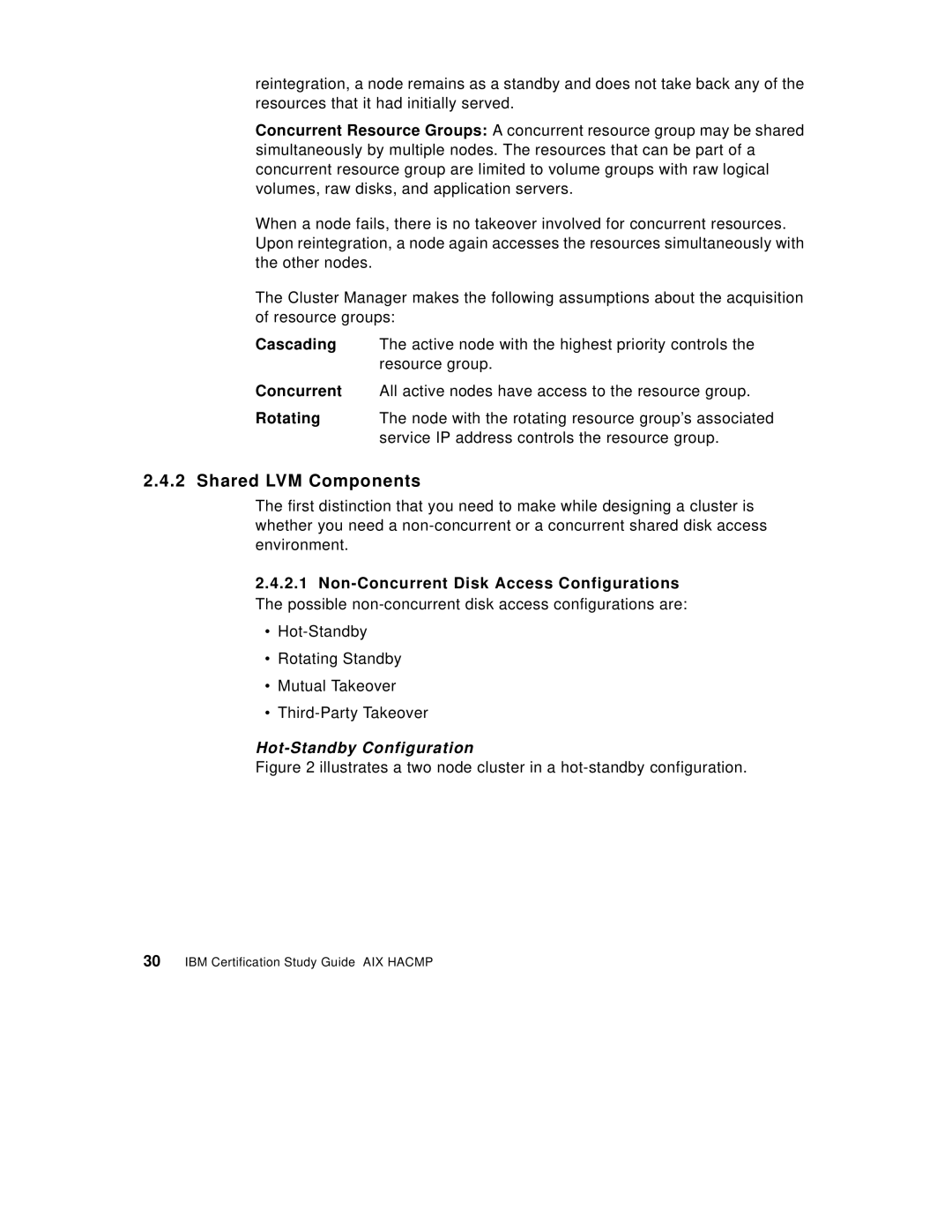reintegration, a node remains as a standby and does not take back any of the resources that it had initially served.
Concurrent Resource Groups: A concurrent resource group may be shared simultaneously by multiple nodes. The resources that can be part of a concurrent resource group are limited to volume groups with raw logical volumes, raw disks, and application servers.
When a node fails, there is no takeover involved for concurrent resources. Upon reintegration, a node again accesses the resources simultaneously with the other nodes.
The Cluster Manager makes the following assumptions about the acquisition of resource groups:
Cascading The active node with the highest priority controls the resource group.
Concurrent All active nodes have access to the resource group.
Rotating The node with the rotating resource group’s associated service IP address controls the resource group.
2.4.2 Shared LVM Components
The first distinction that you need to make while designing a cluster is whether you need a
2.4.2.1
•
•Rotating Standby
•Mutual Takeover
•
